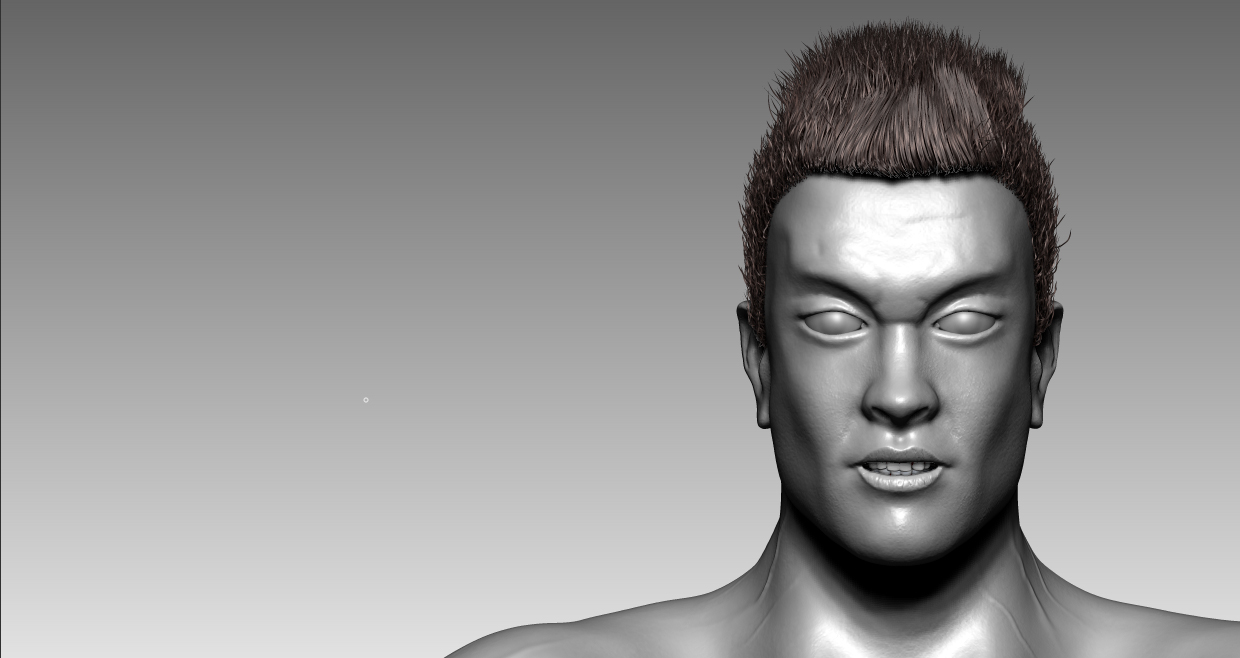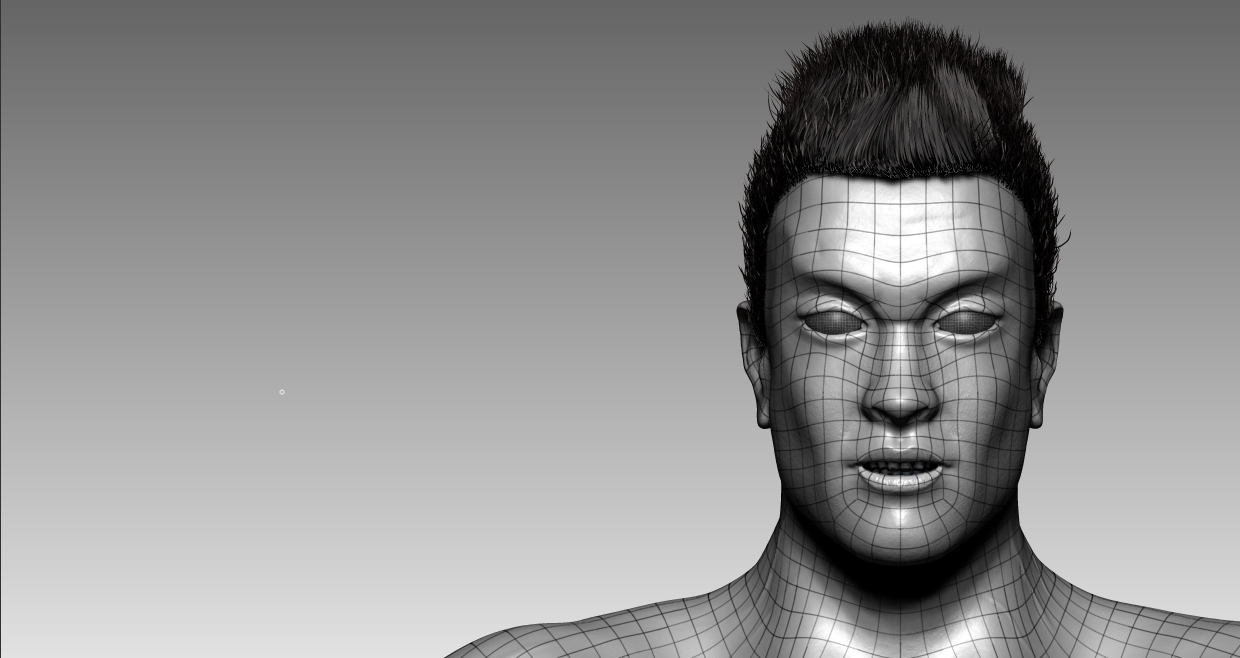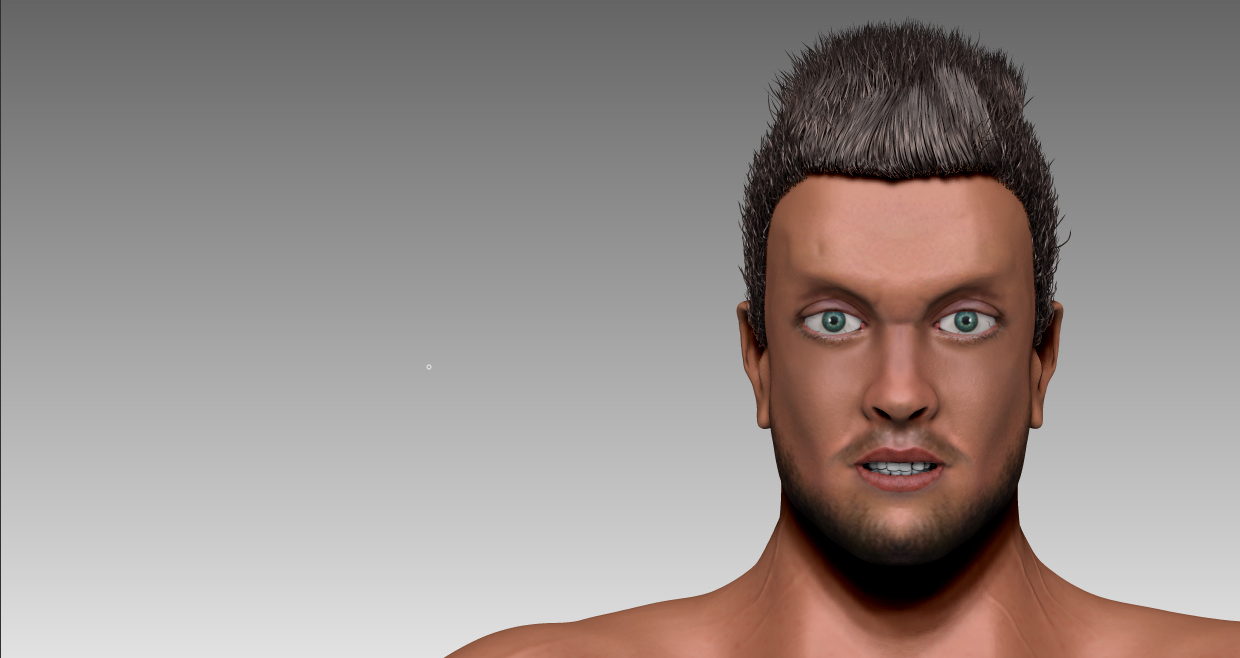PBR:
PBR stands for physically based rendering.
- https://marmoset.co/posts/basic-theory-of-physically-based-rendering/
- https://marmoset.co/posts/physically-based-rendering-and-you-can-too/
Long story short, you’re going to need several different types of texture maps in order to accurately describe any given material (albedo, roughness, reflectivity, ambient occlusion, normal map, and potentially others depending on the type of shader being used by the game engine).
The reality is that Zbrush isn’t going to be a good choice for painting a model meant for PBR rendering. One of the reasons zbrush is so easily able to handle the massive amounts of polygons per model that it can in the first place is because it doesn’t render models with the same kind of shaders that game engines and other 3d programs use. It doesn’t use lights and cameras and surface shaders… instead it fakes its materials through matcaps and images of spheres. Polypaint might be able to convey the data of one RBG texture map, but the shaders for PBR game models will demand several different texture maps (a lot more channels of data) simultaneously working together to create the final result.
Substance Painter is a popular choice since it has a PBR viewport and will let you paint all of these different channels at the same time. Quixel DDO is another choice. In addition to these tools I would also recommend playing with Marmoset Toolbag, Unity, or the Unreal 4 engine so that you can get a better idea what kind of texture maps PBR shaders will look for and how different values will change the results.
Model:
Finally, you’re also going to want to research game topology as well. Currently, the wireframe on the face that you showed looks like a basic grid with no proper edgeflow around any key features of the face. Compare it to examples here, and how these wireframes form edge-loops around the eyes, lips, and nasialabial region. The body is going to be similar in that you’ll want an edgeflow that can isolate and define important muscle groups while providing topology that can deform nicely during animation. It’s going to help if you have access to a program like Blender, Maya, Max, etc where you can rig and animate models. You don’t have to dive too deep into those fields, but having at least some basic experience with that will give you a better understanding of how a model’s topology affects its deformation.
Workflows can change depending on your pipeline and if you’re using a basemesh, but generally you’ll want to:
- Sculpt the highpoly model with your detail. Good topology at this stage can still be important for sculpting, but you have a lot more freedom since you have millions of polygons to work with unlike game models. Save the sculpt somewhere (obj or fbx).
- Retopologize the sculpt. Basically create a second model with the exact same proportions, but focus on clean topology for animation such as in the examples above. For a good game model you will want to look into manual retopology. There are different tools that can help you with this, but basically it consists of loading the highpoly model as a guideline and then drawing the new model's wireframe on top of it.
- This lowpoly game model will also need UVs. When the model is finished and UV'd, save it out as an obj or fbx file as well.
- Load both models into a baking program such as Substance Painter, Marmoset Toolbag, or xnormal in order to bake out some starting data maps (normal, curvature, ambient occlusion, etc).
- From there you can load the lowpoly model and all those baked maps into a painting program like Substance Painter in order to begin painting the texture maps that the game engine will use.
It's a lot of information to take in, but there's a reason it can take years to get the knowledge and experience required to enter the field. I would start looking for courses and training videos that will go over the process of creating a Game Ready model. Specifically find one that covers retopology ([like this](https://www.pluralsight.com/courses/game-characters-maya-zbrush-457)) so that you'll know how to create a game ready model from a zbrush sculpt, and then from there look into videos covering Substance Painter or whatever so that you can learn more about creating PBR textures.

 small_orange_diamond:o
small_orange_diamond:o




